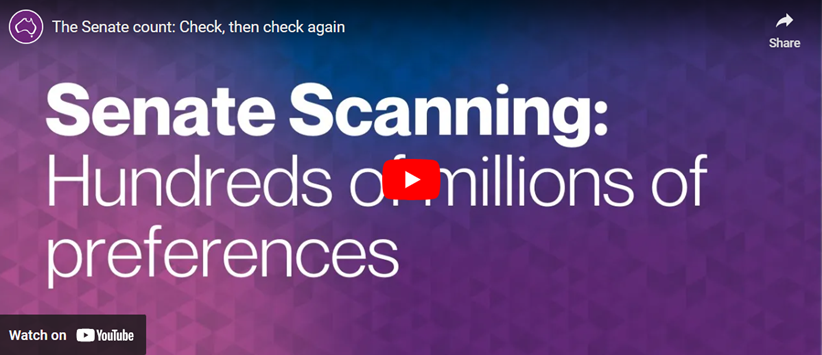Australian Electoral Commission


The AEC has today published the report validating that the distribution of preferences process to be undertaken as part of the Senate count at the next federal election adheres with the requirements of the Electoral Act.
Every Senate ballot paper has an initial manual count of its first preference undertaken, with scrutineers able to observe. The millions of Senate ballot papers are then scanned and the preferences manually verified by counting staff at the Central Senate Scrutiny site before a software-enabled distribution of preferences occurs in each contest. This part of the process is automated through necessity given the tight timeframes of an election and the extreme complexity of the Senate count.

Video: How the Senate count works
To provide external assurance, an independent assessment of the Senate counting software (EasyCount Senate) is undertaken prior to each federal election. In addition to being a critical validation step, this independent assurance report also meets the requirements of section 273AB of the Commonwealth Electoral Act 1918.
The assessment was completed by Deloitte, independently of the AEC. The assessment included testing of the algorithm to be used during the Senate count at the next federal election and validating the results against the requirements of electoral legislation.
EasyCount Senate has been used to distribute Senate preferences for many federal elections. It is secure, accurate and delivers results that reflect the will of voters. The independent assessment published today is one of many validation steps in a highly manual process that Australians can have great faith in.
Editor’s notes: